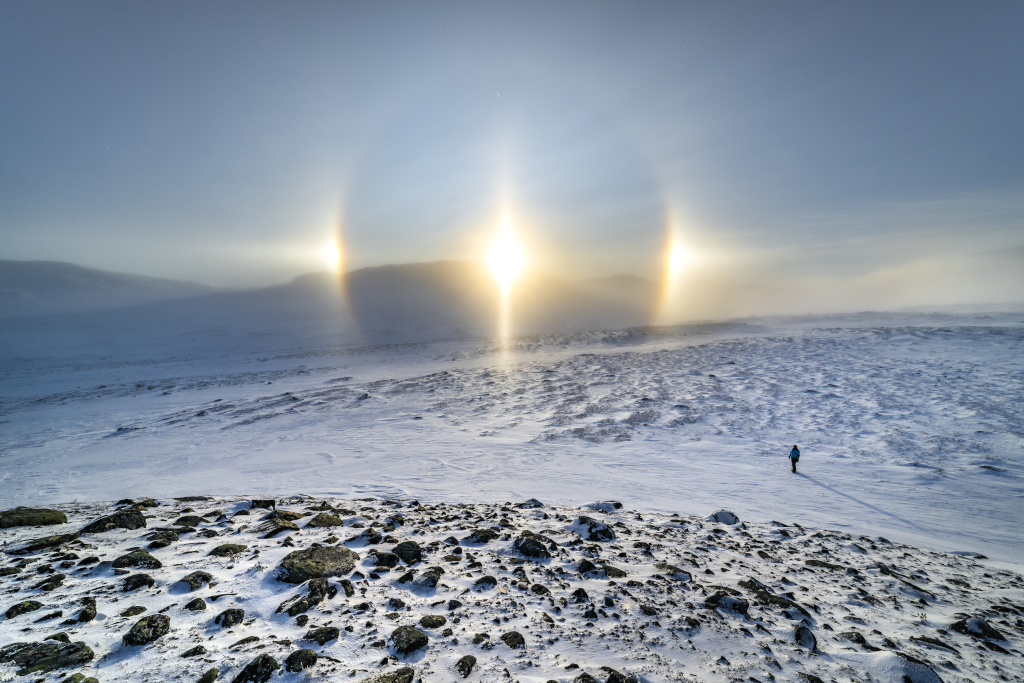阿比斯科的帕赫利亞
Parhelia at Abisko

來源:planet Earth|發表日期:2025-02-15
在這幅世外桃源般的冬景中,三個太陽似乎緊緊擁抱著地平線。不過,這令人回味無窮的場景是 2 月 3 日在地球上瑞典北部阿比斯科國家公園(Abisko National Park)周圍山區進行雪地摩托車探險時捕捉到的。地球太陽兩側的兩個亮點是副日珥(單數parhelion),也被稱為模擬太陽或太陽狗。副日珥是由懸浮在朦朧大氣中的六角形冰晶反射和折射太陽光造成的。明亮的副日珥通常出現在冬季和高緯度地區,沿著太陽可見的 22 度冰暈分佈。
原文:Three suns seem to hug the horizon in this otherworldly winterscape. But the evocative scene was captured during a February 3rd snowmobile exploration of the mountainous region around Abisko National Park, northern Sweden, planet Earth. The two bright spots on either side of Earth's Sun are parhelia (singular parhelion), also known as mock suns or sun dogs. The parhelia are caused by hexagonal ice crystals suspended in the hazy atmosphere that reflect and refract sunlight. Commonly seen in winter and at high latitudes, the bright parhelia lie along the visible 22 degree ice halo of the Sun.
※ 本文由萌芽機器人自動轉貼自每日一天文圖(Astronomy Picture of the Day,APOD),原文為英文,正體中文是透過 DeepL 翻譯及 OpenCC 進行自動處理,內容僅供參考,若有任何錯誤之處還請見諒!
關於每日一天文圖:每日一天文圖網站是美國國家航空暨太空總署與密西根理工大學提供的服務,網站每天提供一張影像或圖片,並由天文學家撰寫扼要說明其特別之處。